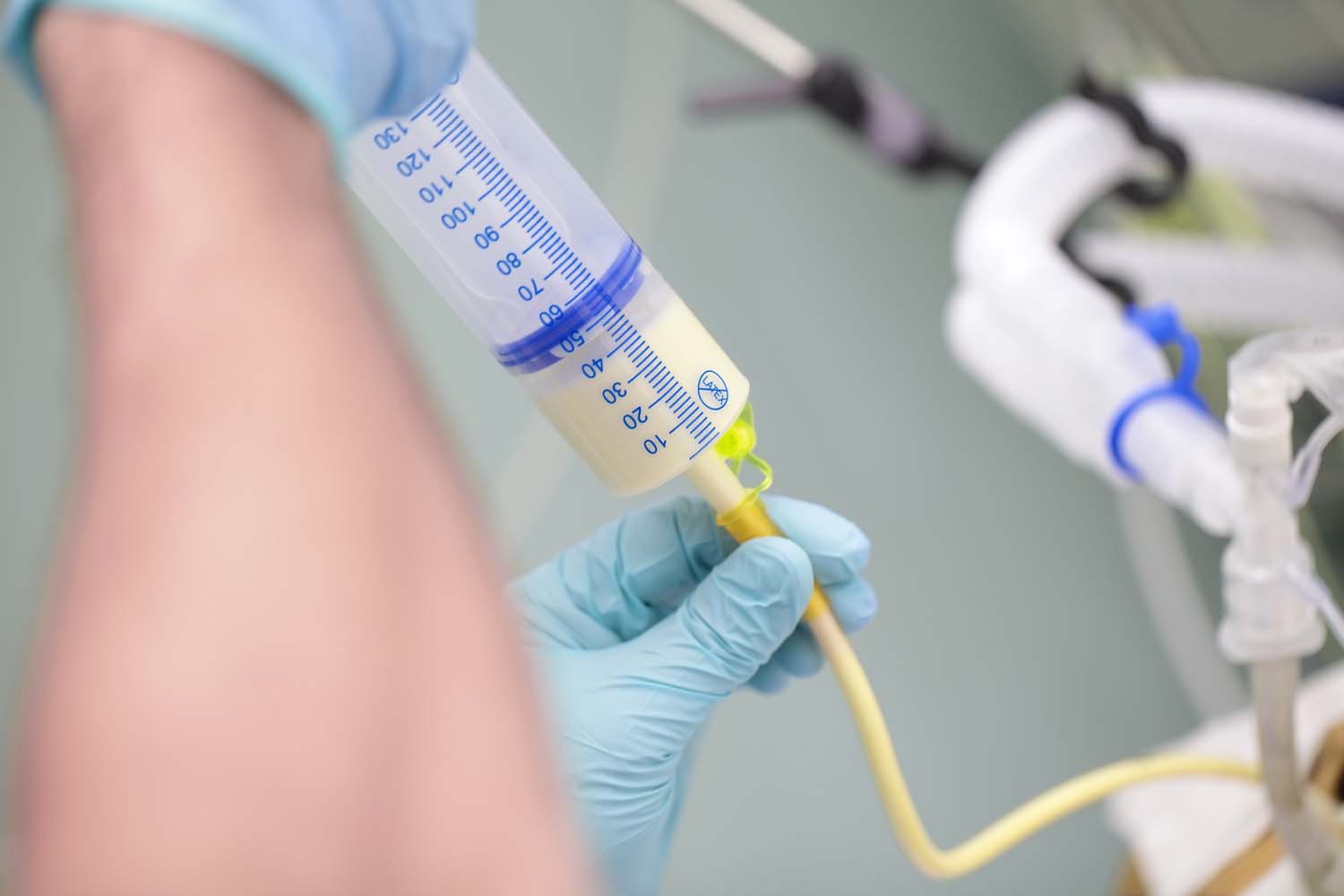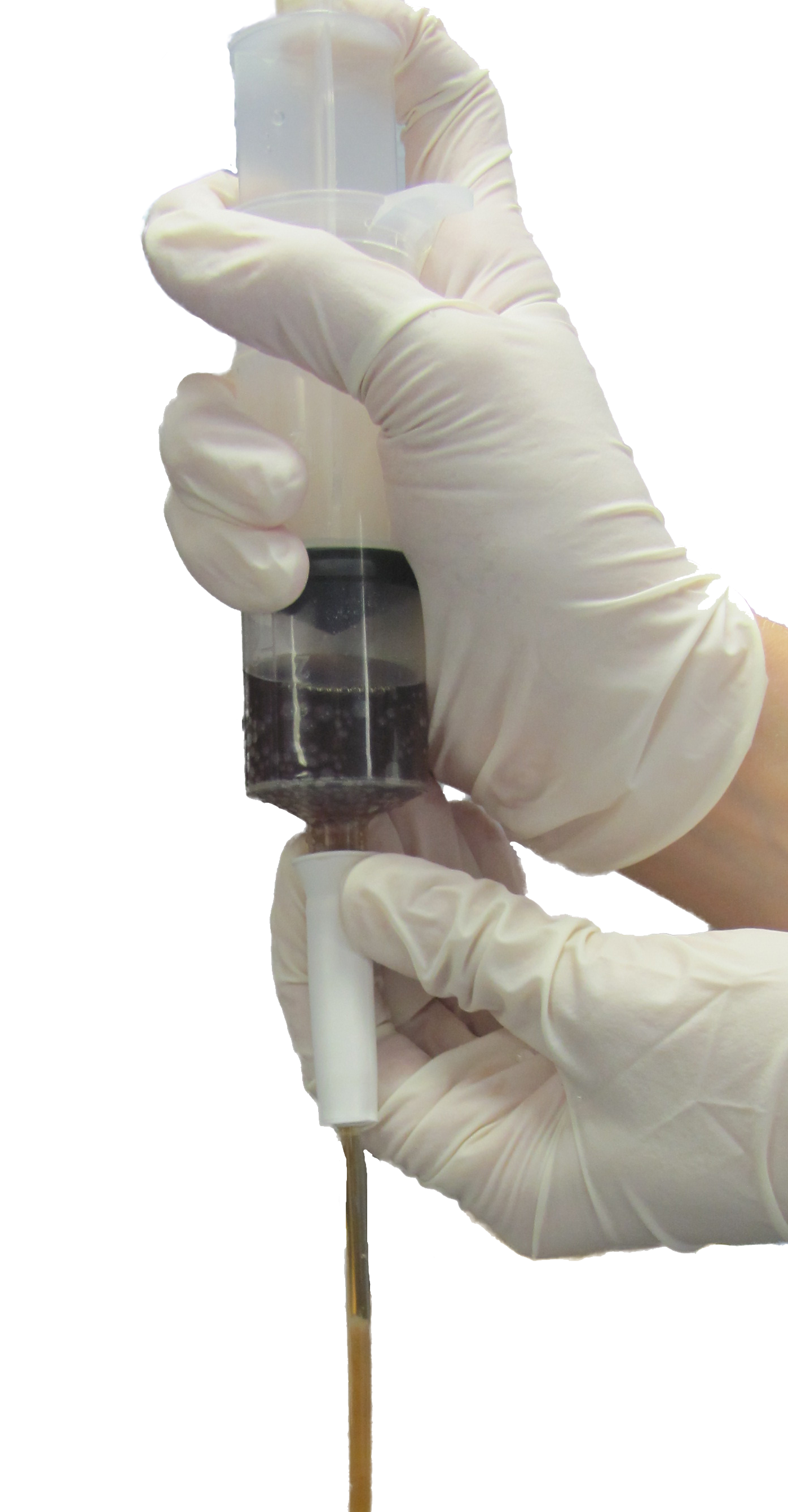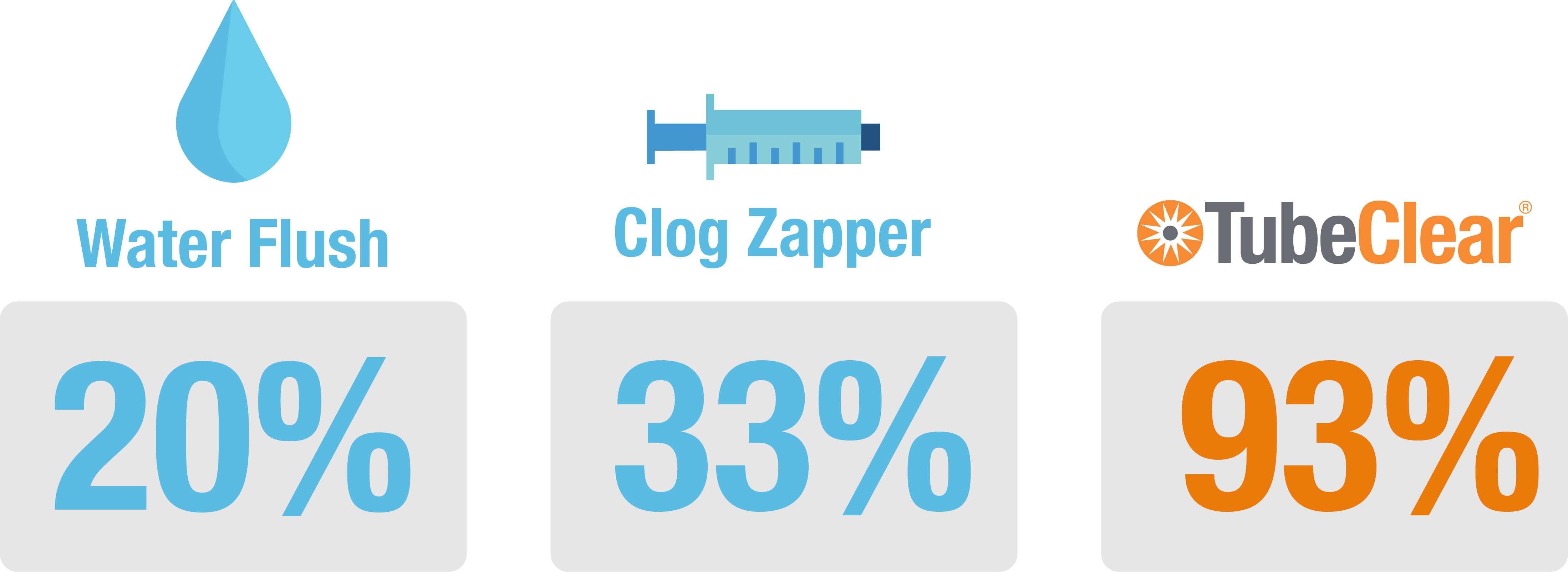No one wants a clogged feeding tube. They impact the patient’s ability to receive adequate nutrition and keep medication on schedule.[1] If the clog cannot be cleared, the tube is replaced. Tube replacement can be a painful, risky, and costly procedure that can include x-rays, surgery, and emergency transportation. Plus, it takes hours or even days before the patient receives a new tube. The lack of medication, nutrition, and hydration increases the patient’s cost of care.
Because of this, nurses and caregivers have tried several different strategies for clearing and preventing clogs. From flushing with soda to using products designed for clogged feeding tubes, below are some of the most common solutions.

Water
The current standard practice, health care facilities and feeding tube manufacturers alike recommend flushing tubes with water regularly to treat and prevent clogs. In spite of this, clogs still occur as often as 15% of the time.[2] An internal bench study at Actuated Medical, Inc. showed feeding formula still left on the interior tube walls after flushing with water.[4] Power flushing, a technique in which the syringe depressed with extra force, may cause the water to come back out of the entry port, or worse – rupture the tube.[2,3]
When clogged, water flushing restored feeding tube flow just 20% of the time and took nearly two hours.[5]
Soft Drinks
When water fails, clinicians and care givers turn to soda or juice to dissolve clogs. This is a myth.[4] In fact, literature suggests that the opposite is true: soft drinks make existing clogs worse. The acidic fluid mixed with feeding formula causes a reaction that forms a new clog.[6] In addition, cola and orange juice can damage the interior lining of feeding tubes.[7] In general, studies suggest lack of efficacy with these remedies,[3,8] with more recent literature discouraging the practice altogether.[9]

Enzyme Mixtures
Another common solution involves crushing enzymes and mixing with baking soda to dissolve the clog. Early studies showed this to be effective.[2] However, the compound used in these studies was discontinued when the Food and Drug Administration (FDA) started regulating enzymes.[2] Some alternatives have enteric coating, making it difficult to crush and more likely to create clogs. Other enzymes tested for removing clogs were less than 50% effective.[10]
Enzyme-Based Clog Removing Products
While a clogged feeding tube is a common problem, few products have been developed to treat them. One such product, Clog Zapper (Avanos Medical, Inc., Alpharetta, GA), is a pre-mixed food-based enzyme that includes a stylet for improved access to the clog. A recent bench study found limited effectiveness against clogs at just 33%. It also takes a long time – in the same study, Clog Zapper required two hours or more to work (if it did at all).[5] The product is designed for formula clogs and is ineffective in clogs containing medication. In addition, Clog Zapper’s label states that it Contains Tree Nuts (Coconuts). Therefore, clinicians must ensure that their patients do not have a food allergy to Coconuts prior to use.

A comparison of each solution’s effectiveness against clogs.[5]
Manual Clog Removing Devices
When fluids and enzymes don’t work, clinicians turn to mechanical tools designed for clogged feeding tubes. One advantage of these types of devices: the clog contents don’t matter.
Declogger (Bionix Development Corporation, Toledo, OH) is a plastic screw-like device for large-diameter feeding tubes. There is limited information available about its effectiveness. A few adverse events have been reported in which the tip of the device broke off inside the feeding tube.
Powered Clog Clearing Devices
Another mechanical product, the TubeClear system, uses a motor to move a flexible Clearing Stem backward and forward to break up clogs in most types and sizes of feeding tubes.[11] A recent study found the TubeClear system at least four times as effective as flushing with water, and 13 times faster.[11] In fact, clinical use found that the TubeClear system cleared clogs in an average of 14 minutes.[12] Designed specifically for feeding tubes, the TubeClear system did not cause damage during use in bench studies.
Download the White Paper
The downside? Limited published clinical data and minimal reimbursement. But that’s a defining characteristic of innovation; early adopters are beginning to see its benefits to patient care and nursing experience.
What are your experiences with clogged feeding tubes? Have you used any of the solutions mentioned in this article, or perhaps something entirely different?
References:
- Bourgault AM, Heyland DK, Drover JW, Keefe L, Newman P, Day AG. Prophylactic pancreatic enzymes to reduce feeding tube occlusions. Nutr Clin Pract. 2003;18(5):398-401.
- Dandeles LM, Lodolce AE. Efficacy of agents to prevent and treat enteral feeding tube clogs. Ann Pharmacother. 2011;45(5):676-680.
- Fisher C, Blalock B. Clogged Feeding Tubes: A Clinician’s Thorn. Practical Gastroenterology. 2014:16-22.
- Hayes KD, Hayes DD. Best practices for unclogging feeding tubes in adults. Nursing2019. 2018;48:1.
- Garrison CM. Enteral Feeding Tube Clogging: What Are the Causes and What Are the Answers? A Bench Top Analysis. Nutr Clin Pract. 2018;33(1):147-150.
- Boullata JI, Carrera AL, Harvey L, et al. ASPEN Safe Practices for Enteral Nutrition Therapy. JPEN J Parenter Enteral Nutr. 2017;41(1):15-103.
- Rucart PA, Boyer-Grand A, Sautou-Miranda V, Bouteloup C, Chopineau J. Influence of unclogging agents on the surface state of enteral feeding tubes. JPEN J Parenter Enteral Nutr. 2011;35(2):255-263.
- Metheny N, Eisenberg P, McSweeney M. Effect of feeding tube properties and three irrigants on clogging rates. Nurs Res. 1988;37(3):165-169.
- Zoeller, S., Bechtold, M.L., Burns, B., Cattell, T., Grenda, B., Haffke, L., Larimer, C., Powers, J., Reuning, F., Tweel, L., Guenter, P. Dispelling Myths and Unfounded Practices About Enteral Nutrition. Nutrition in Clinical Practice. 2020. 1-9.
- Stumpf JL, Kurian RM, Vuong J, Dang K, Kraft MD. Efficacy of a Creon delayed-release pancreatic enzyme protocol for clearing occluded enteral feeding tubes. Ann Pharmacother. 2014;48(4):483-487.
- TubeClear | Occlusion Clearing System. Actuated Medical Inc. https://www.tubeclear.com/. Published 2012. Accessed.
- Belcher, M. “An Active Device for Restoring Patency in Clogged Small Bore Feeding and Decompression Tubes, Case Report Series.” 2016. https://www.tubeclear.com/white-paper-download.